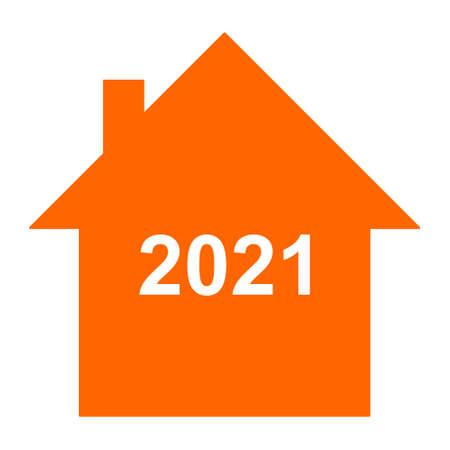Introduction to UK Government Green Schemes
Over the past decade, the UK government has introduced a series of green schemes aimed at improving energy efficiency and reducing carbon emissions within the residential property sector. These initiatives not only address national environmental targets but also influence the value and marketability of homes across the country. Among the most prominent schemes are the Green Homes Grant, the Energy Company Obligation (ECO), and the Minimum Energy Efficiency Standards (MEES). Each scheme is underpinned by legislation designed to support both homeowners and landlords in making sustainable improvements. The table below provides an overview of these key green initiatives, their main objectives, and legislative background within the UK context.
| Scheme | Objective | Legislative Background |
|---|---|---|
| Green Homes Grant | To provide financial support for homeowners to install energy-efficient improvements such as insulation and low-carbon heating | Launched in 2020 under the Green Homes Grant Voucher Scheme; part of the governments plan for a green recovery from COVID-19 |
| Energy Company Obligation (ECO) | To obligate larger energy suppliers to deliver energy efficiency measures to domestic premises, particularly for vulnerable or low-income households | Established under The Electricity and Gas (Energy Company Obligation) Order 2012; revised periodically with new phases (ECO3, ECO4) |
| Minimum Energy Efficiency Standards (MEES) | To set minimum EPC (Energy Performance Certificate) rating requirements for private rented properties, aiming to reduce energy consumption and fuel poverty | Introduced under The Energy Efficiency (Private Rented Property) (England and Wales) Regulations 2015; applies to all new tenancies since April 2018 and existing tenancies from April 2020 |
Together, these schemes reflect a comprehensive governmental strategy to drive sustainable home improvements while meeting legally binding climate commitments. Their implementation not only impacts household running costs but also increasingly shapes buyer expectations and overall residential property values across the UK.
2. Mechanisms Linking Green Schemes to Property Values
Government-backed green initiatives in the UK have a direct and measurable impact on residential property values. These schemes—ranging from grants for installing solar panels to incentives for upgrading insulation—work through several key mechanisms that enhance a propertys market standing.
Energy Efficiency Improvements
The most prominent effect comes from heightened energy efficiency. Homes that benefit from government-funded upgrades, such as double glazing, modern boilers, or advanced insulation, typically achieve higher Energy Performance Certificate (EPC) ratings. Properties with superior EPC ratings are more attractive to buyers due to lower utility bills and reduced environmental impact.
Cost Savings and Running Costs
Green schemes often lead to significant reductions in day-to-day running costs. For homeowners, government subsidies can offset the initial cost of installation, while ongoing savings come from decreased energy consumption. This improvement in affordability can make properties more desirable on the open market.
| Green Scheme Feature | Potential Cost Saving (£/year) | Effect on Property Value (%) |
|---|---|---|
| Wall Insulation | £150–£270 | +2–3% |
| Solar Panels | £200–£400 | +3–5% |
| Double Glazing | £80–£120 | +1–2% |
Appeal to Environmentally Conscious Buyers
The UK property market is seeing increased demand from buyers who prioritise sustainability and reduced carbon footprints. Government schemes highlight a homes green credentials, making it stand out amongst comparable properties. This appeal often translates into faster sales and sometimes even premium pricing.
Summary of Mechanisms:
- Enhanced EPC ratings: Attracts buyers seeking efficient homes.
- Lower running costs: Increases disposable income for residents and adds value.
- Sustainability credentials: Appeals to eco-minded buyers and future-proofs the investment.
Together, these mechanisms not only support the UKs broader environmental goals but also create tangible financial advantages for homeowners, driving up both demand and value within the residential property sector.
![]()
3. Empirical Evidence and Case Studies
The influence of UK government green schemes on residential property values has been the subject of extensive empirical analysis and real-world observation. Numerous studies and case examples highlight a positive correlation between energy efficiency improvements, incentivised by government initiatives, and an uplift in property prices across various regions in the UK.
Quantitative Research Findings
Data from the Department for Levelling Up, Housing and Communities, as well as independent academic research, consistently demonstrate that homes with higher Energy Performance Certificate (EPC) ratings command premium prices compared to less efficient counterparts. According to a 2023 study by the University College London, properties upgraded from EPC band D to band B saw an average value increase of 5%–8%. The following table summarises key findings from recent studies:
| Study | Green Scheme Analysed | Average Value Increase (%) |
|---|---|---|
| UCL 2023 | EPC Upgrades (D to B) | 5-8% |
| Savills Research 2022 | Green Homes Grant Uptake | 4-6% |
| ONS 2021 | Boiler Upgrade Scheme | 3-5% |
Case Studies: Real-World Examples
Practical case studies reinforce these quantitative trends. For example, homeowners in Greater Manchester participating in local authority retrofit schemes reported both reduced energy bills and increased asking prices upon sale. Similarly, London boroughs implementing council-backed solar panel initiatives have seen neighbourhood-wide improvements in property marketability.
Regional Variations
The impact of green schemes on property values is not uniform nationwide. In regions with higher energy costs or older housing stock—such as parts of Scotland and Northern England—the value uplift tends to be more pronounced due to greater potential for improvement. Conversely, areas with newer builds or higher baseline EPC ratings may see more modest financial gains.
Conclusion from Evidence
The collective weight of data and case-based evidence underscores that UK government green schemes are not only beneficial for environmental sustainability but also play a significant role in enhancing residential property values, making them a compelling consideration for homeowners, investors, and policymakers alike.
4. Homeowner Behaviour and Market Perception
The success of UK government green schemes in influencing residential property values is closely linked to how homeowners and potential buyers perceive these initiatives. Attitudes towards environmental upgrades, such as the Green Homes Grant or Energy Company Obligation (ECO), have evolved, with many Britons now recognising both the environmental and financial benefits. However, perceptions are not uniform across the market; regional differences, property types, and individual priorities all play significant roles in shaping behaviours.
Understanding Homeowner Attitudes
Homeowners who have already invested in energy-efficient measures often view government schemes positively, noting reduced utility costs and improved comfort. Nevertheless, some remain sceptical about the upfront investment required and the actual impact on long-term property value. For example, while double glazing and loft insulation are widely accepted as value-enhancing features, newer technologies like heat pumps can be met with hesitation due to perceived maintenance complexities or uncertain payback periods.
Buyer Perspectives: What Drives Demand?
Potential buyers increasingly consider a propertys energy performance certificate (EPC) rating when making purchasing decisions. Higher EPC ratings not only signal lower running costs but also future-proof homes against tightening regulations. The table below illustrates key factors influencing buyer demand for green properties:
| Factor | Buyer Perception | Impact on Market Dynamics |
|---|---|---|
| Energy Efficiency Upgrades | Saves money; desirable feature | Increased competition for upgraded homes |
| Government Incentives | Reduces cost of improvements | Higher uptake of green measures |
| EPC Ratings | Key decision criterion | Price premium for higher-rated homes |
| Future Regulation Compliance | Avoids future expense/risk | Drives early adoption of green tech |
| Aesthetic/Practical Concerns | Mixed opinions on visual impact | Varied acceptance depending on technology type |
Cultural Shifts and Regional Variations
The British market is witnessing a cultural shift towards sustainability, yet this trend is stronger in metropolitan areas like London or Manchester than in rural regions where traditional building methods prevail. Media coverage, peer influence, and local authority engagement further shape public sentiment and willingness to participate in green schemes.
Ultimately, the interplay between homeowner behaviour and market perception determines how effectively government green initiatives translate into tangible increases in residential property values. As awareness grows and incentives become more attractive, the market is likely to see a broader alignment between sustainable upgrades and enhanced property desirability across the UK.
5. Challenges and Limitations of Green Schemes
The implementation of UK Government green schemes has not been without its challenges, particularly regarding their effectiveness in driving up residential property values. Despite the positive intentions behind these initiatives, several obstacles remain that limit their impact on the housing market.
Funding Issues
One of the primary barriers is funding. While grants such as the Green Homes Grant have provided some support, the overall financial backing for comprehensive retrofitting or energy efficiency improvements often falls short. Homeowners may find that government incentives do not cover the full cost of upgrades, leaving them to shoulder a significant portion of the expenses themselves.
| Scheme | Funding Available | Average Upgrade Cost | Funding Gap |
|---|---|---|---|
| Green Homes Grant | Up to £5,000 | £8,000 – £15,000 | £3,000 – £10,000 |
| ECO Scheme | Variable (Means Tested) | £6,000 – £12,000 | £2,000 – £8,000 |
Awareness Gaps and Uptake Rates
A lack of awareness among homeowners and landlords presents another significant hurdle. Many are either unaware of available schemes or unsure about how to access them. This knowledge gap results in low uptake rates, thereby limiting the widespread adoption needed for substantial impact on property values.
Regional Disparities
The benefits of green schemes are not evenly distributed across the UK. For example, properties in London and the South East are more likely to see increases in value due to higher base prices and greater demand for eco-friendly homes. In contrast, regions with lower average property values or older housing stock may struggle to realise similar gains, exacerbating existing inequalities.
Examples of Regional Impact Variation
| Region | Average Value Increase Post-Upgrade (%) |
|---|---|
| London & South East | 8-10% |
| Northern England & Scotland | 3-5% |
| Wales & Northern Ireland | 2-4% |
Policy Framework Limitations
The current policy frameworks underpinning green schemes also face criticism for lacking long-term vision and consistency. Frequent changes to eligibility criteria or funding levels create uncertainty within the market and among homeowners. Without stable policies and reliable incentives, both public confidence and investor interest wane—ultimately hindering efforts to boost property values through sustainability improvements.
Summary of Main Challenges Affecting Property Value Impact:
- Insufficient funding compared to real upgrade costs
- Lack of scheme awareness among target groups
- Inequitable regional benefits and property market disparities
- Unstable and sometimes short-sighted policy frameworks
Tackling these challenges requires a coordinated approach involving better funding mechanisms, targeted outreach programmes, regionally tailored solutions, and robust long-term policies to ensure that green schemes effectively enhance residential property values across the UK.
6. Policy Recommendations and Future Prospects
To ensure that UK Government green schemes maximise their positive impact on residential property values, several policy enhancements and forward-looking strategies should be considered. Below are practical suggestions and anticipated trends in government action regarding sustainability and the property market.
Enhancing Existing Green Schemes
Current schemes such as the Green Homes Grant and Energy Company Obligation (ECO) have laid a solid foundation for promoting energy efficiency. However, challenges remain in uptake, funding accessibility, and public awareness. The table below outlines key recommendations for improvement:
| Issue Identified | Suggested Enhancement |
|---|---|
| Low Public Awareness | Nationwide campaigns highlighting financial benefits of green upgrades and case studies from local communities. |
| Complex Application Processes | Simplify application forms and provide dedicated helplines or local council support desks. |
| Limited Funding Scope | Expand grants to cover a wider range of energy-saving measures including insulation, heat pumps, and smart controls. |
| Lack of Skilled Installers | Invest in training programmes and certification schemes for installers across all regions. |
| Inconsistent Regional Uptake | Targeted incentives for areas with historically lower participation rates, especially in deprived communities. |
Anticipated Developments in UK Policy
The UK government is expected to introduce stricter regulations on minimum energy performance standards (MEPS) for both new builds and existing properties. This shift will likely drive demand for retrofitting and increase the premium attached to high EPC-rated homes. Further integration of sustainability criteria into Stamp Duty Land Tax (SDLT) reliefs or council tax discounts is also under discussion as a way to incentivise homeowners to improve property efficiency.
Potential Future Policy Moves:
- Mandatory EPC Improvements: Legislation may require all homes sold or let after 2028 to achieve a minimum EPC C rating, accelerating market transformation.
- Green Finance Initiatives: Expansion of green mortgages with preferential rates for energy-efficient homes.
- Smart Technology Adoption: Grants for installing smart meters, thermostats, and other IoT-based efficiency solutions.
- Bespoke Support for Heritage Properties: Special funding streams recognising the unique challenges of retrofitting older buildings common in the UK housing stock.
The Role of Local Authorities and Community Engagement
Councils play a pivotal role in delivering tailored advice, supporting local installer networks, and fostering community-led retrofit initiatives. Encouraging partnerships between local authorities, housing associations, and private homeowners can unlock greater economies of scale and foster a culture of long-term maintenance aligned with sustainability goals.
In summary: The continued evolution of government green schemes presents significant opportunities to enhance both environmental outcomes and residential property values across the UK. By addressing current barriers, embracing innovative policy developments, and fostering regional collaboration, the UK can set a benchmark for sustainable homeownership that delivers lasting value to individuals and communities alike.


